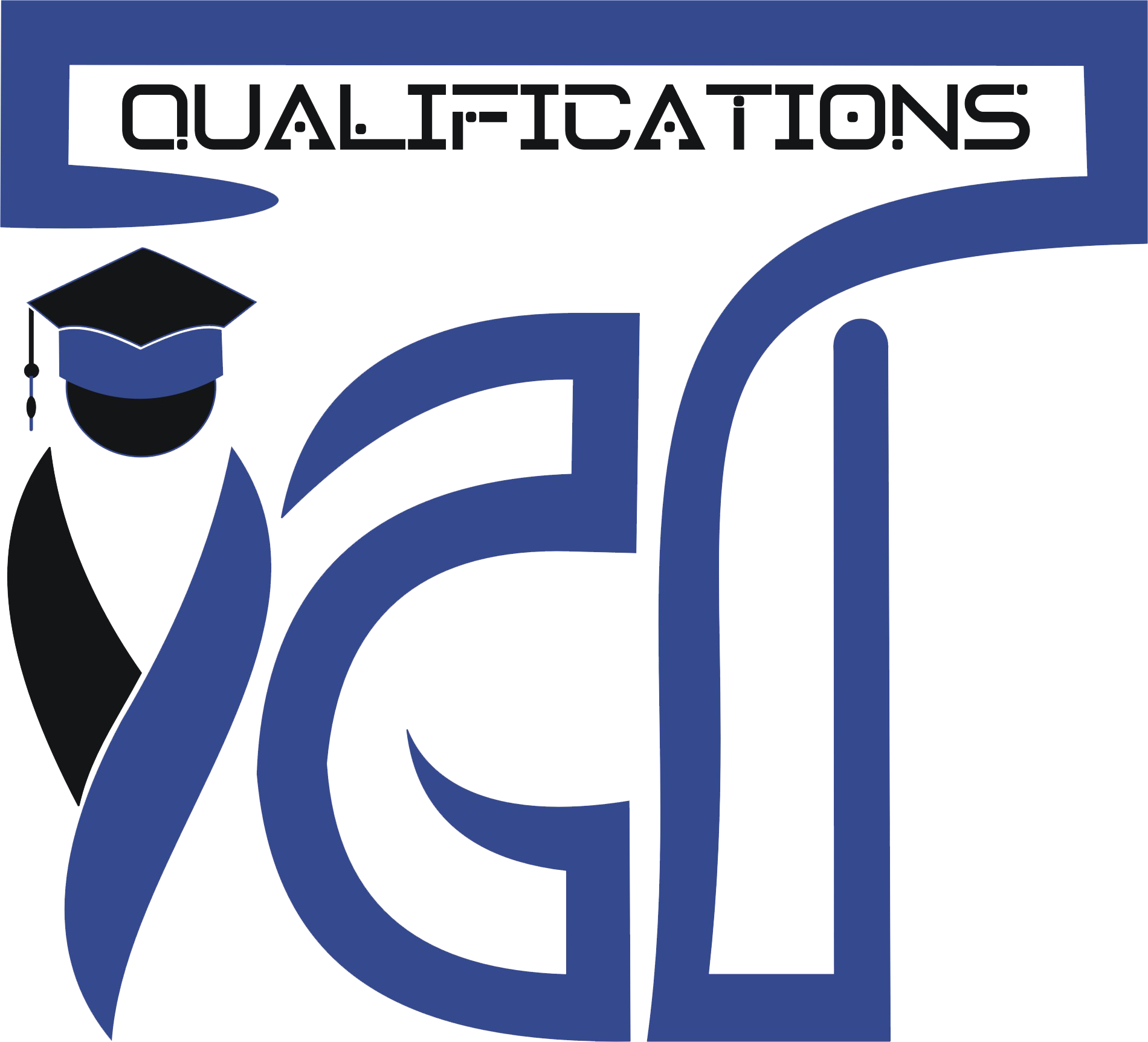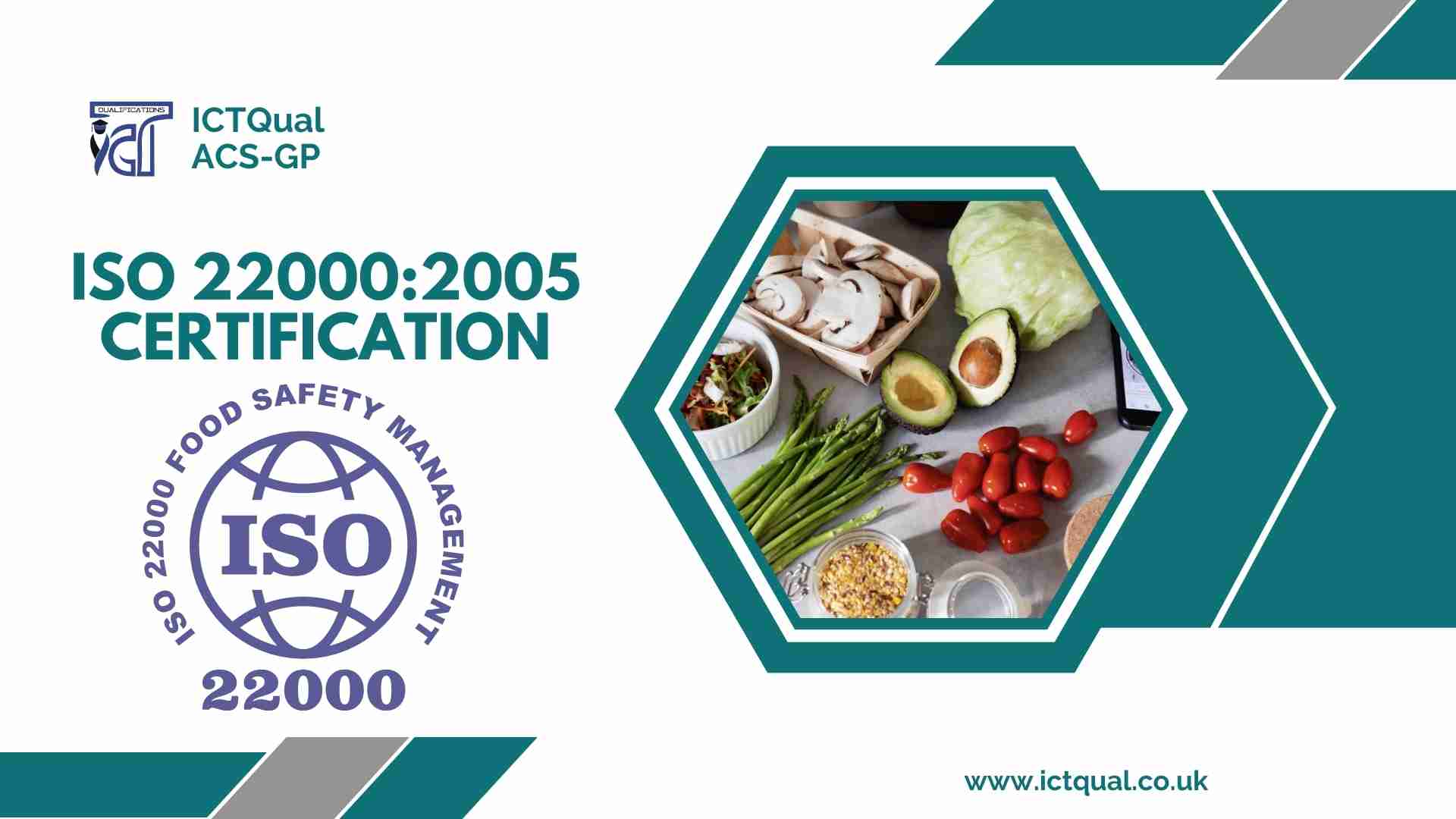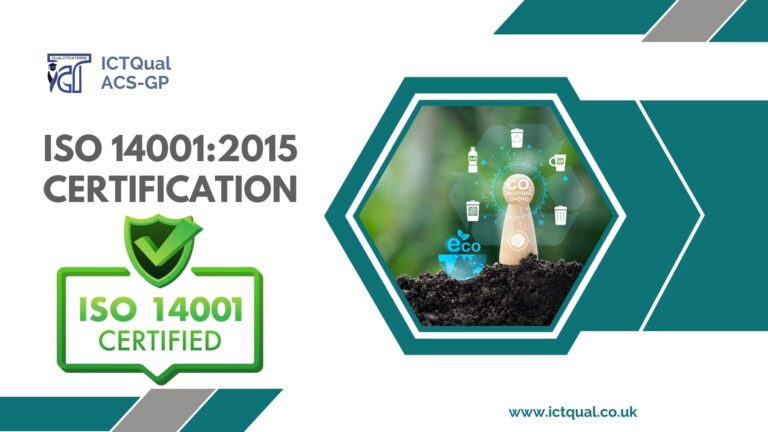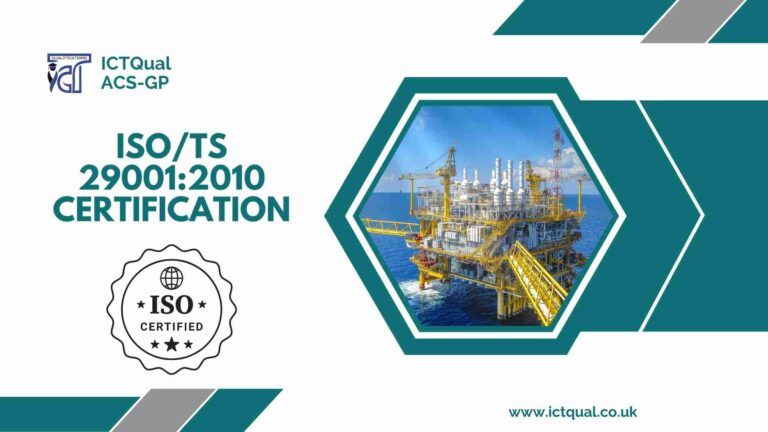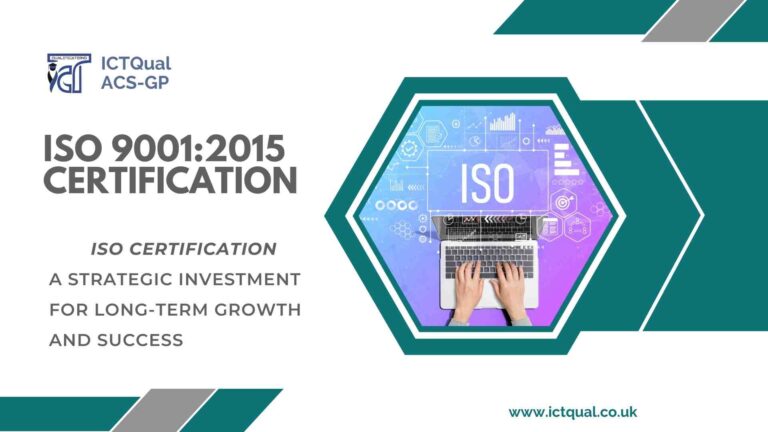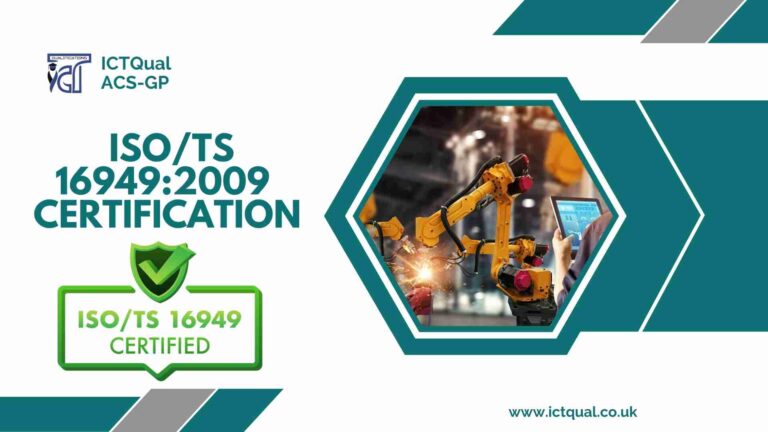Attention all food-related businesses!
Are you looking to take your company to the next level of food safety and quality? Look no further than ISO 22000:2005 Certification!
This prestigious certification is recognized worldwide and demonstrates your commitment to maintaining the highest standards of food safety and quality. Plus, it gives your customers added confidence in the products they purchase from you.
Don’t miss out on this opportunity to elevate your business to new heights! Contact us today to learn more about ISO 22000:2005 Certification and how we can help you achieve it.
ICTQual is Exclusive partner of ACS-GP and providing services for company registration with ISO in following ISO Standards
ISO 22000:2005 Certification
ISO 22000:2005 is a globally recognized standard for food safety management systems. It provides a framework for companies involved in food production, processing, packaging, transportation, and storage to establish, implement, maintain and continually improve a system for managing food safety risks.
The standard is based on the principles of Hazard Analysis and Critical Control Points (HACCP), which is an internationally recognized approach to identifying and controlling food safety hazards. ISO 22000:2005 certification helps companies ensure the safety and quality of their products, meet customer and regulatory requirements, and reduce the risk of foodborne illness or contamination.
Obtaining ISO 22000:2005 certification requires companies to undergo a rigorous audit process by an accredited third-party certification body. The audit evaluates the company’s food safety management system against the requirements of the standard and ensures that the company has implemented effective controls to manage food safety risks.
The Importance of Food Safety Management Systems
Food safety management systems are essential to ensure that food products are safe for human consumption. The consequences of a food safety incident can be severe, including illness, death, and damage to a company’s reputation. Therefore, implementing a food safety management system is critical for companies involved in any aspect of the food supply chain, including production, processing, distribution, and retail.
A food safety management system is a systematic approach to identifying, preventing, and controlling food safety hazards throughout the entire food supply chain. It includes the implementation of best practices, procedures, and policies that address all aspects of food safety, including personnel hygiene, sanitation, product labeling, traceability, and recall procedures.
The benefits of a food safety management system are numerous. Firstly, it helps to protect consumers from foodborne illness by ensuring that the food they consume is safe and free from contamination. Secondly, it can improve a company’s reputation, as it demonstrates a commitment to food safety and quality. Thirdly, it can help to prevent food recalls, which can be costly and damaging to a company’s bottom line. Finally, it can provide a competitive advantage by meeting customer demands for safe and high-quality food products.
Overall, the implementation of a food safety management system is essential for any company involved in the food industry. It helps to ensure the safety and quality of food products, protect consumers, and safeguard a company’s reputation and bottom line.
The Principles of Hazard Analysis and Critical Control Points (HACCP)
Hazard Analysis and Critical Control Points (HACCP) is a systematic approach to identifying, evaluating, and controlling food safety hazards. It is based on seven principles:
- Conduct a Hazard Analysis: Identify all potential biological, chemical, and physical hazards that could occur in the food production process.
- Determine Critical Control Points (CCPs): Determine the points in the production process where a hazard can be prevented, eliminated, or reduced to an acceptable level.
- Establish Critical Limits: Establish measurable and verifiable criteria that must be met to control a hazard at a CCP.
- Implement Monitoring Procedures: Establish procedures to monitor the CCPs to ensure they are under control and to identify when a deviation occurs.
- Establish Corrective Actions: Establish procedures for taking corrective action when a deviation from a critical limit occurs.
- Implement Verification Procedures: Establish procedures to verify that the HACCP system is working effectively, including validation of the system, verification of monitoring procedures, and review of records.
- Establish Record-Keeping and Documentation Procedures: Establish procedures for maintaining and documenting all aspects of the HACCP system.
By following these principles, companies can identify and control potential hazards at critical points in the production process, reducing the risk of foodborne illness and ensuring the safety of their products. The HACCP system is widely recognized and accepted internationally as a key component of food safety management systems.
Requirements for ISO 22000:2005 Certification
To obtain ISO 22000:2005 certification, a company must meet the following requirements:
Meeting these requirements demonstrates that the company has established and implemented a food safety management system that meets the requirements of the ISO 22000:2005 standard and is committed to ensuring the safety and quality of its products.
Benefits of ISO 22000:2005 Certification for Companies
ISO 22000:2005 certification provides a range of benefits for companies that are involved in the production, handling, or distribution of food products. Here are some of the main benefits:
Improved Food Safety
Implementing an ISO 22000:2005 food safety management system helps companies to identify and control food safety hazards at all stages of the food supply chain, from raw materials to finished products. This helps to prevent incidents of food contamination and reduces the risk of foodborne illnesses.
Enhanced Compliance
ISO 22000:2005 certification demonstrates that a company is committed to meeting food safety regulatory requirements and standards. This can help to enhance a company’s reputation, increase customer confidence, and lead to greater market access.
Better Risk Management
The ISO 22000:2005 standard incorporates the principles of Hazard Analysis and Critical Control Points (HACCP), which provides a systematic and proactive approach to identifying and managing food safety risks. This helps companies to minimize the risk of product recalls, litigation, and damage to brand reputation.
Increased Efficiency
Implementing an ISO 22000:2005 food safety management system can help companies to streamline their operations and reduce costs by minimizing waste, improving productivity, and reducing the need for rework and recalls.
Improved Communication
The ISO 22000:2005 standard emphasizes the importance of effective communication between all stakeholders in the food supply chain, including suppliers, customers, and regulatory authorities. This helps to ensure that everyone is aware of their responsibilities and can work together to maintain food safety.
Competitive Advantage
ISO 22000:2005 certification can provide a competitive advantage for companies by demonstrating their commitment to food safety and quality management. This can help to attract new customers, retain existing ones, and differentiate the company from competitors.
Overall, ISO 22000:2005 certification can help companies to improve their food safety performance, increase efficiency, and enhance their reputation and market access.
Key Requirements for ISO 22000:2005 Certification for Companies
The key requirements for ISO 22000:2005 certification for companies are as follows:
Food Safety Policy
The company must establish a food safety policy that is documented, communicated and implemented throughout the organization.
Hazard Analysis
The company must conduct a hazard analysis to identify and assess food safety hazards and to determine the necessary control measures.
Operational Prerequisite Programs
The company must establish and implement operational prerequisite programs (PRPs) that address the basic conditions and activities necessary for the production of safe food.
Critical Control Points (CCPs)
The company must establish and implement control measures at critical control points to prevent or eliminate food safety hazards.
Monitoring
The company must monitor the effectiveness of the food safety management system and control measures, and take corrective action when necessary.
Verification
The company must verify the effectiveness of the food safety management system and control measures through internal audits and reviews.
Communication
The company must establish and maintain effective communication with external parties, such as suppliers and customers, on matters related to food safety.
Management Review
The company must conduct management reviews of the food safety management system at planned intervals to ensure its continuing suitability, adequacy and effectiveness.
Continual Improvement
The company must continually improve the food safety management system by setting objectives, conducting evaluations and implementing actions to achieve those objectives.
Companies seeking ISO 22000:2005 certification must meet all of these requirements, as well as any additional requirements set forth by the certification body conducting the audit.
ISO 22000:2005 Certification process
The ISO 22000:2005 Certification process for companies involves several steps:
Assessing the company’s readiness
The first step is for the company to assess its current food safety management system against the requirements of the ISO 22000:2005 standard. This helps to identify any gaps or areas that need improvement.
Developing a food safety management system
Based on the assessment, the company needs to develop and implement a food safety management system that meets the requirements of the ISO 22000:2005 standard.
Preparing for the certification audit
The company should prepare for the certification audit by reviewing and verifying that its food safety management system meets the requirements of the standard. This may involve conducting internal audits and addressing any non-conformities.
Selecting a certification body
The company must select an accredited third-party certification body to conduct the certification audit. The certification body should be recognized by the International Accreditation Forum (IAF) and have experience in auditing against the ISO 22000:2005 standard.
Conducting the certification audit
The certification audit is conducted in two stages. Stage 1 involves a document review and site inspection to verify that the food safety management system is in place and meets the requirements of the standard. Stage 2 involves a more detailed audit of the system to ensure that it is effectively implemented and maintained.
Certification decision
Based on the audit findings, the certification body makes a certification decision. If the company meets the requirements of the ISO 22000:2005 standard, it will be issued a certificate of conformity.
Maintaining certification
The company must maintain its certification by undergoing periodic surveillance audits to ensure that its food safety management system continues to meet the requirements of the standard.
Overall, obtaining ISO 22000:2005 certification demonstrates a company’s commitment to food safety and helps to ensure that its products are safe for consumption.
Maintaining ISO 22000:2005 Certification
Maintaining ISO 22000:2005 certification is an ongoing process that requires companies to continually monitor and improve their food safety management system (FSMS). This ensures that the company remains in compliance with the standard and continues to meet customer and regulatory requirements.
One key aspect of maintaining ISO 22000:2005 certification is conducting regular internal audits of the FSMS. This involves reviewing procedures, documentation, and records to identify any non-conformities or areas for improvement. Any issues that are identified should be addressed promptly and corrective actions taken to prevent them from recurring.
In addition to internal audits, companies must also undergo periodic external audits by the certification body. This ensures that the company’s FSMS continues to meet the requirements of the ISO 22000:2005 standard and that it is effectively controlling food safety hazards.
Another important aspect of maintaining certification is staying up-to-date with changes to the standard. ISO 22000:2005 was updated in 2018, and companies must ensure that their FSMS is in compliance with the new requirements. This may involve updating procedures and documentation, providing additional training to employees, and making other changes as necessary.
Finally, companies should regularly review and assess their FSMS to ensure that it remains effective and is achieving its intended outcomes. This may involve setting and monitoring key performance indicators (KPIs) related to food safety, conducting customer satisfaction surveys, and seeking feedback from employees and other stakeholders.
Overall, maintaining ISO 22000:2005 certification requires a commitment to continuous improvement and a proactive approach to managing
Conclusion and Future Outlook for ISO 22000:2005 Certification
In conclusion, ISO 22000:2005 certification provides a comprehensive framework for ensuring food safety and maintaining the trust of customers and regulators. Companies that obtain this certification demonstrate their commitment to food safety and their ability to manage risks effectively.
Looking ahead, the importance of food safety is only expected to increase. As the global food supply chain becomes more complex and interconnected, the need for standardized food safety management systems will become even more critical.
In addition, advances in technology and data analytics are likely to play a growing role in food safety management. ISO 22000:2005 certification can help companies stay ahead of the curve by providing a strong foundation for integrating new technologies and processes into their food safety management systems.
As such, ISO 22000:2005 certification is likely to remain a valuable asset for companies in the food industry for many years to come. By continuously improving their food safety management systems and maintaining their certification, companies can ensure that they are well-positioned to meet the evolving challenges of the global food supply chain.
